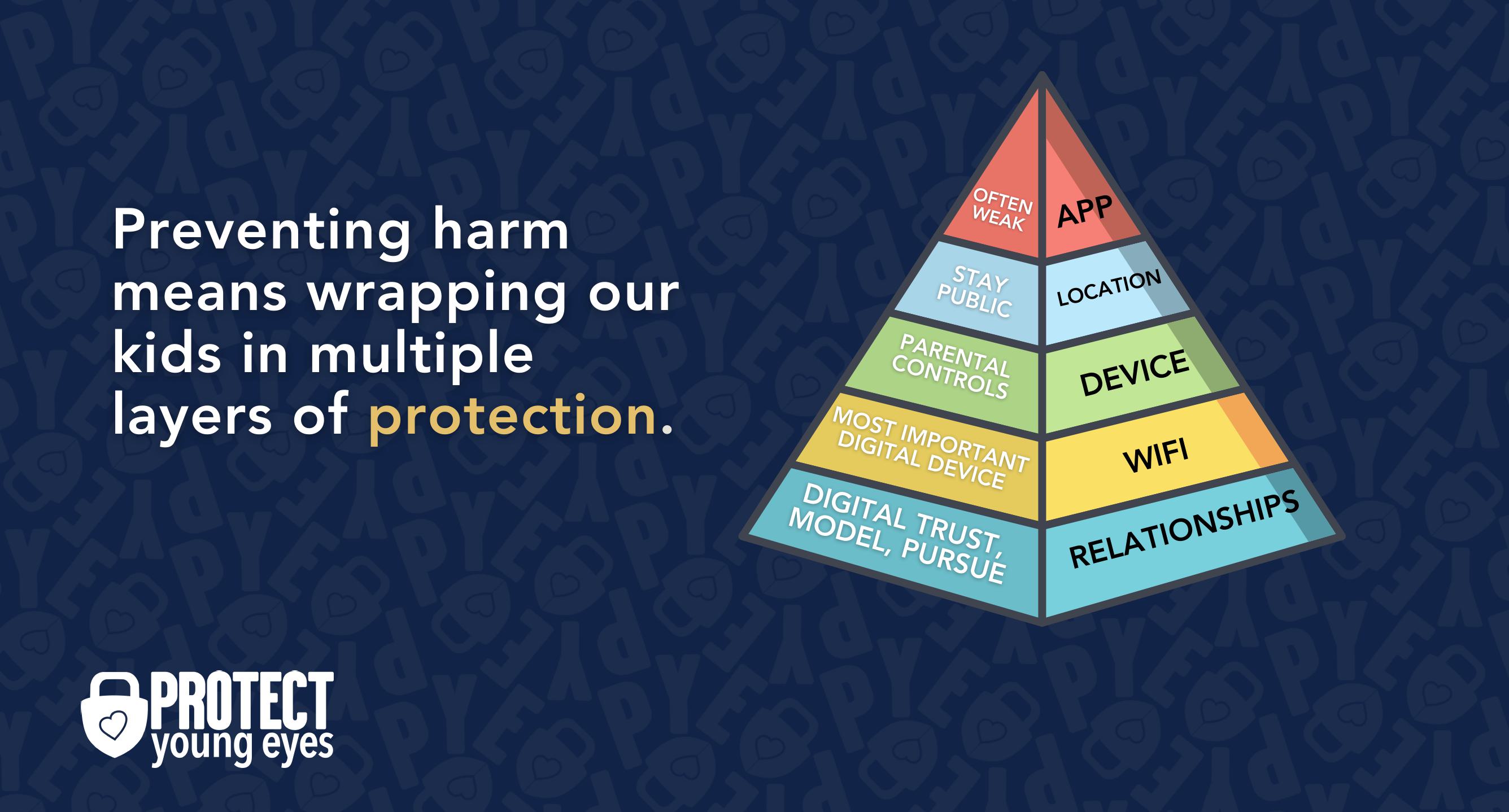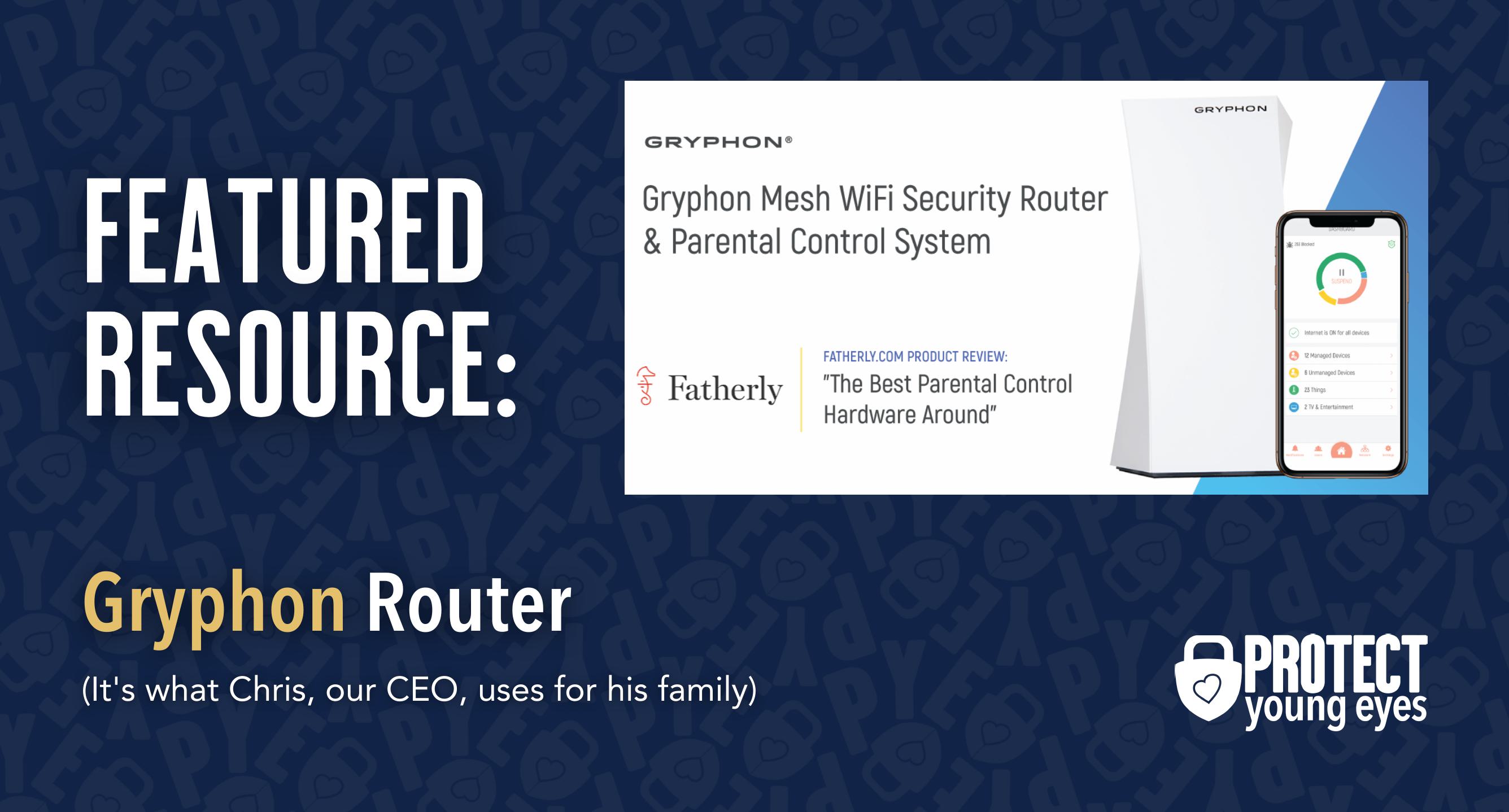Join the Movement - Sign the Delay Manifesto 📑

The Complete Guide to PS4 Parental Controls
The gaming systems today are fantastic pieces of tech. But please never forget that all gaming systems now can connect to the internet in some way. This is why it is so important to set up the PlayStation 4 parental controls using the guide below.
%25201.png)
Guard your PlayStation 4 Device with Layers
We believe the best way to prevent digital harm on all digital devices is by following our 5 Layers of Protection:
Layer 1: Relationships
Layer 2: WiFi (Router)
Layer 3: The PlayStation 4 Device
Layer 4: Location
Layer 5: App

In a digital world that is increasingly hostile toward children, our response must be strong and relevant. That's why we believe in wrapping our kids in multiple layers of protection. One or two are often not enough.
Layer 1: The Relationship (Build Digital Trust)
To learn why our relationships with our children are the foundation of protection and how to build digital trust (Layer 1), here are relevant blog posts:
- 10 Before 10: Making Porn a Normal Conversation
- How to Talk to a 5-year-old About Porn
- Tricky People -Stranger Danger in the Digital Age
- What is Sextortion? A Prevention and Response Guide for Families
- Why Kids Look at Pornography
Layer 2: WiFi (Router)
The Router is the most important digital hardware in the house! And, it’s often the most ignored. But, you are responsible for every digital click on your home’s network, so monitoring and controlling its activity is important.
Popular options for parents are:
- Gryphon Advance Security & Parental Controls router. This is the router used by our CEO, Chris, with his four children. It gives you time control, YouTube Restricted Mode, and more. Easy set-up and a parent app that allows you to pause the internet with one touch.
- Alternatively, if you love your current router, but simply want to exert more control over it, then we recommend Bark Home. It connects to your router, giving you stronger parental controls over your home’s network. It’s not a router, but connects to your router. Easy-to-use app for you to exert screen time and app control over your kid.

Bonus content – we tested the best routers out there and here’s WHY we picked Gryphon.
Layer 3: The PlayStation 4 Device
There’s a pretty impressive array of PlayStation 4 parental controls available on the device. Accurate set-up is important.
From the Home screen, scroll up to get to the Function menu. Scroll right to “Settings” and select it by pressing the X button on the controller. Then select “Parental Controls/Family Management” to view the following two sets of parental controls.
- PS4 System Restrictions: Manage the entire use of your PlayStation by choosing “PS4 System Restrictions.” You can set restrictions on all users on the system controlled with a system restriction passcode.
- Family Management: Become a family manager and create accounts for up to 7 children in your household. This allows you to customize parental controls for each child, as explained below.
Choosing “PS4 System Restrictions”
- Select “PS4 System Restrictions” by pressing the X button and then select “Application” (games and apps) to apply the appropriate parental control.
- The default 4-digit password is 0000 (four zeros). It is recommended that you reset the password. This can be done from the “PS4 System Restrictions” menu. Select “Change System Restriction Passcode” using the X button, then enter the current password, and you will then be prompted to enter a new passcode. Don’t forget it! You will be prompted to enter this new passcode every time you want to adjust any parental controls setting.
- Select “Default Parental Controls” in the “PS4 System Restrictions” menu to get started. Select “Age Level for Games” and then choose a restriction level. The following numbers correspond to age ratings that come from the Entertainment Software Ratings Board (ESRB):
- 3 – E (Everyone)
- 4 – E10+ (Everyone 10+)
- 5 – T (Teen)
- 9 – M (Mature)
- 10 – AO (Adults Only)
- To control what videos are viewable without first entering the system restriction passcode, adjust the “Age Level for Blu-ray Disc/DVDs.”
- To require the system restriction password before using PlayStation VR, set “Use of PlayStation VR” to “Not Allowed.”
- To set parental controls for the Internet browser (**important**), in “Parental Controls,” select “PS4 System Restrictions” and then select “Default Parental Controls” followed by “Use of Internet Browser.” Your options are “Allowed” or “Not Allowed.” Selecting “Not Allowed” will block access to the browsing of the Internet on the PS4 system.
Choosing “Family Management”
After adding user accounts, you can configure these accounts. Two spots where parents typically want to exert some control include playtime controls and spending limits.
Playtime Controls
- On your PS4 system, go to “Settings” and select “Parental Controls/Family Management.”
- Select “Family Management”.
- Select the user for whom you want to set a spending limit, then select “Play Time Settings”.
- Choose a time zone for your child.
- Choose “Play Time Restrictions” and set it to “Restrict”.
- Choose “When Play Time Ends” and choose “Notify Only” if you want your child to see an on-screen message when their playtime is over. Choose “Log Out of PS4” for stricter play time controls.
- In “Duration and Playable Hours” you can choose when your child is allowed to use the PS4 and for how long. Add a checkmark to “By Days of the Week” to schedule different play times for each day of the week.
- Save your changes to play time settings.
NOTE: it is possible to bypass a parental control passcode by initializing (resetting) the console. This deletes all user profiles and is essentially a factory reset. It’s an extreme measure, but one that parents just want to be aware of.
Spending Limits for Child Accounts
- On your PS4 system, go to “Settings” and select “Parental Controls/Family Management.”
- Select “Family Management”.
- Select the user for whom you want to set a spending limit, then select “Applications/Devices/Network Features”.
- Scroll down to “Monthly Spending Limit” and press the X button.
- Choose a monthly spending limit for this user and press the X button. When you’re done, your changes will be saved automatically.
NOTE: Funds will be taken from the family manager’s wallet, so make sure you set limits and don’t pre-load funds into the wallet. The family manager will always receive an email whenever a purchase is made via the PlayStation Store for added control.
Layer 4: Location (It matters)
Guard the location of the device. Why? Because where kids use technology often dictates how they use their technology.
Related post: The 5 Worst Places for a Kid to be Online
We have strong opinions about managing where kids use their tech. For example, let’s keep all internet-ready devices out of bedrooms at night, where kids take more risks, and sleep is constantly interrupted.
Just know that the combination of boredom, bedrooms, and darkness (the Toxic Trio) often lead to bad digital choices, whether you’re 14 or 40 years old!
Layer 5: Apps
To learn why apps are often the least protected digital spaces and how to set them up safely (Layer 5), here are popular app reviews:
What if I have more questions? How can I stay up to date?
Two actions you can take!
- Subscribe to our tech trends newsletter, the PYE Download. About every 3 weeks, we’ll share what’s new, what the PYE team is up to, and a message from Chris.
- Ask your questions in our private parent community called The Table! It’s not another Facebook group. No ads, no algorithms, no asterisks. Just honest, critical conversations and deep learning! For parents who want to “go slow” together. Become a member today!

A letter from our CEO
Read about our team’s commitment to provide everyone on our global platform with the technology that can help them move ahead.
Featured in Childhood 2.0
Honored to join Bark and other amazing advocates in this film.
World Economic Forum Presenter
Joined a coalition of global experts to present on social media's harms.
Testified before Congress
We shared our research and experience with the US Senate Judiciary Committee.
















